Chinese man wears a protective face mask as he passes by the CCTV
building on a day of heavy pollution on Monday in Beijing, China.
China’s capital and many cities in the northern part of the country
recorded the worst smog of the year with air quality devices in some
areas unable to read such high levels of pollutants: photo by Kevin Frayer, 1 December 2015
The palm at the end of the mind,
Beyond the last thought, rises
In the bronze distance.
A gold-feathered bird
Sings in the palm, without human meaning,
Without human feeling, a foreign song.
You know then that it is not the reason
That makes us happy or unhappy.
The bird sings. Its feathers shine.
The palm stands on the edge of space.
The wind moves slowly in the branches.
The bird’s fire-fangled feathers dangle down.
Wallace Stevens (1879-1957): Of Mere Being (1954), from Opus Posthumous, 1957

Vehicles pass on a road as smog covers #China's capital #BeijingSmog REUTERS/Jason Lee: image via Reuters Paris Pix @ReutersParisPix, 1 December 2015

Aiyaa! Another day of chunky air in China. The People's Republic is polluting the motherland. #BeijingSmog: image via Mo Fei Chen @DynaMoChen, 1 December 2015
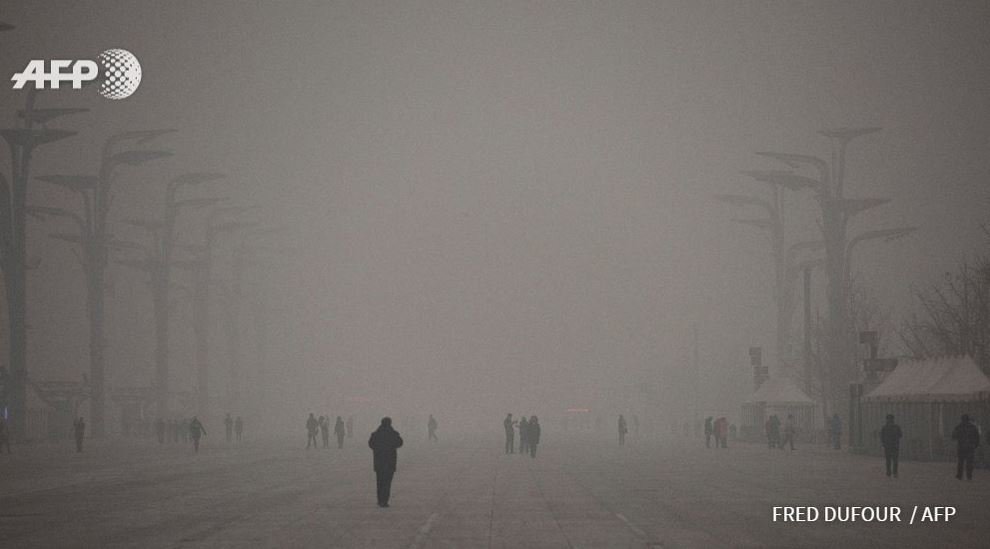
Beijing factories shut amid smog nightmare: image via Agence France-Presse @AFP, 1 December 2015
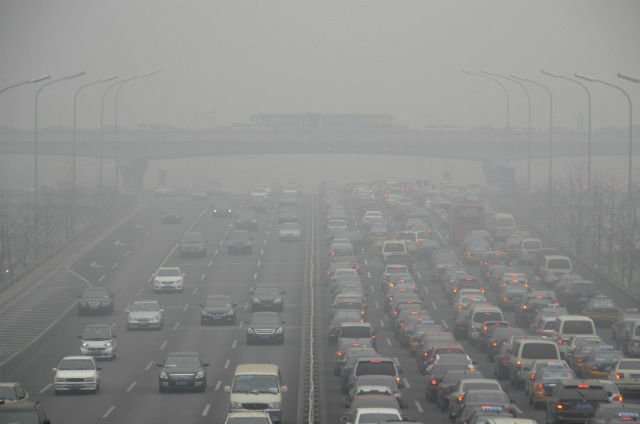
#Beijing escalates smog warning, orders factories to shut down and trucks off the road: image via Jim Roberts @nycjim, 29 November 2015
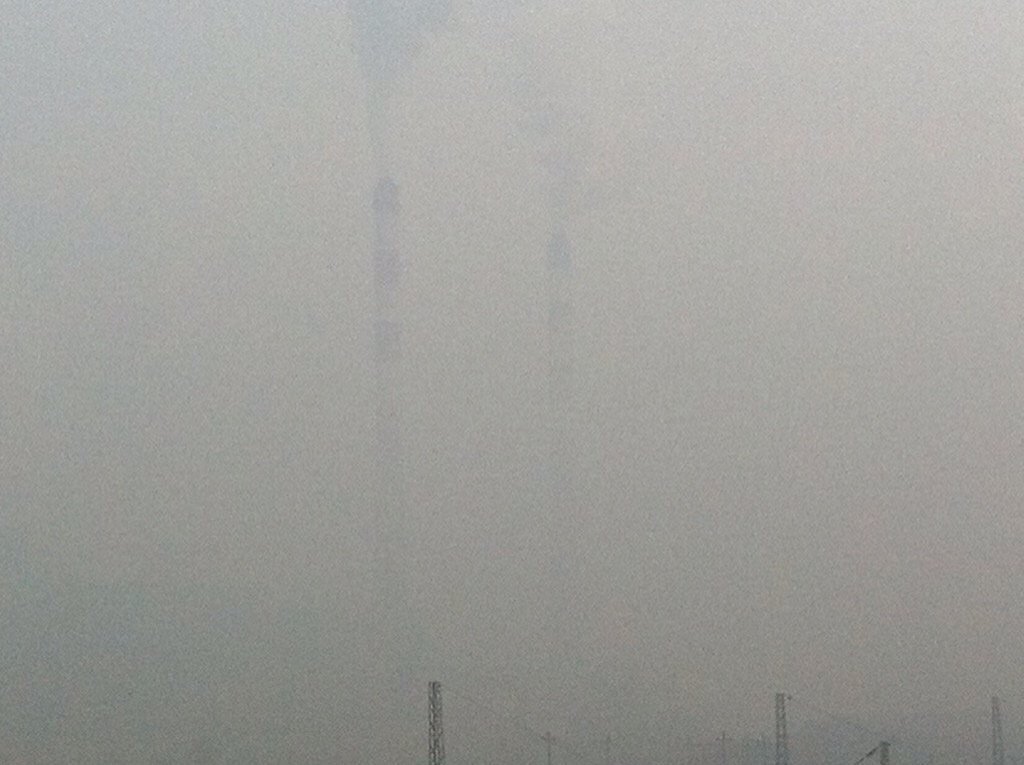
You can taste the GDP today #Beijing: image via Robert Foyle Hunwick @MrRFH, 30 November 2015
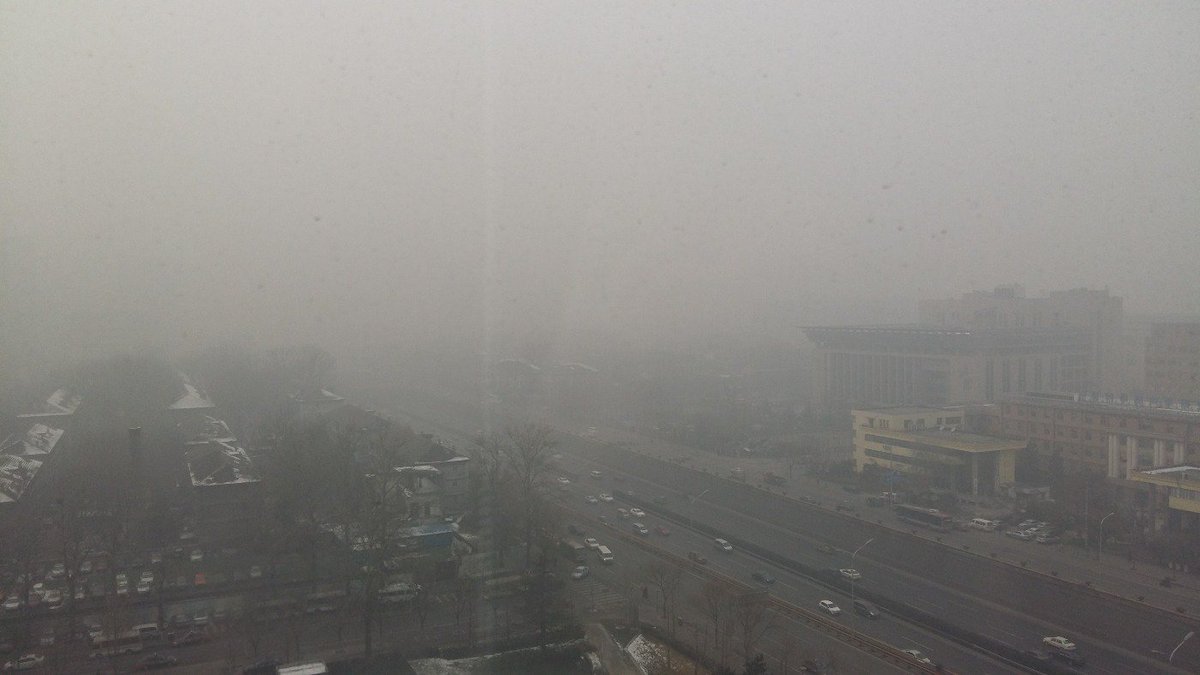
Beijing today. PM 2.5 in office: 67 ("Fresh Air"). Outside: 966. #beijing #beijingair #beijingsmog: image via Martijn Herrman @Martijn Herrman, 30 November 2015
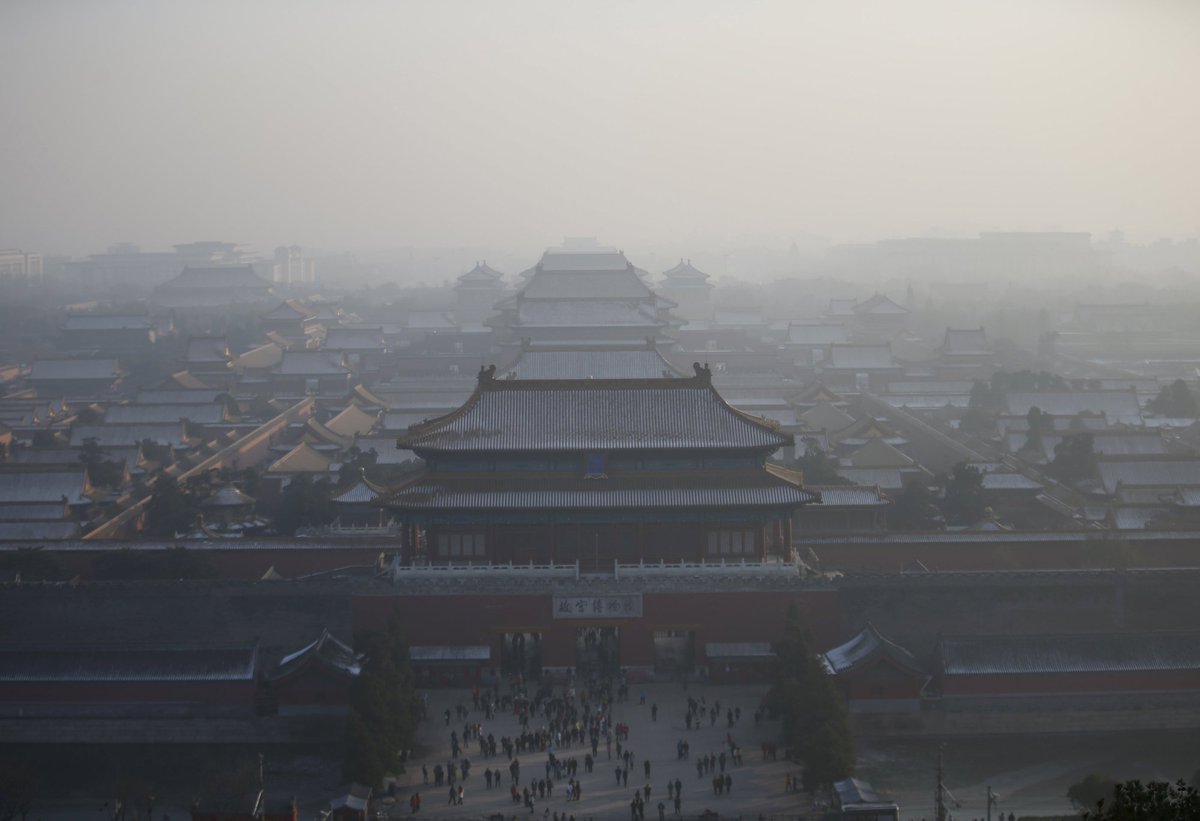
#Smog covers area of 530,000 sqkm around Beijing-Tianjin-Hebei region, as heavy air pollution hits 31 cities: image via CCTVNEWS @cctvnews, 29 November 2015
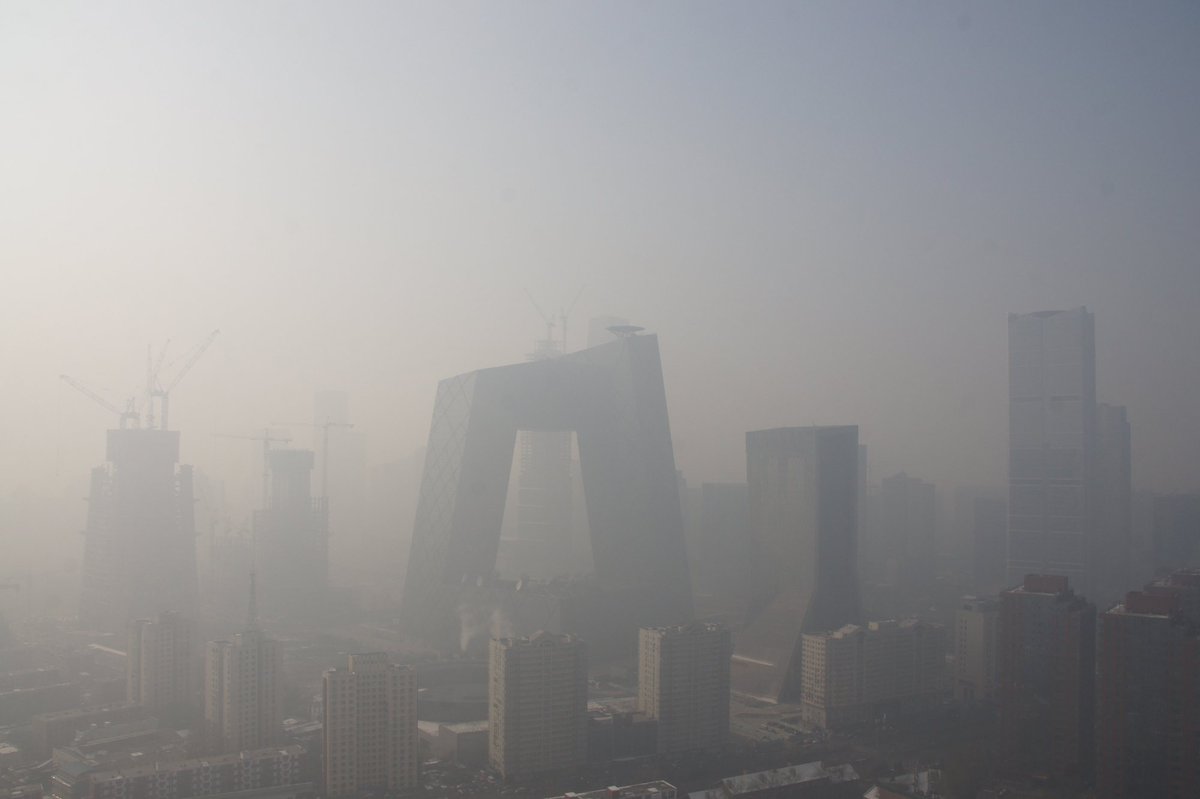
#Smog covers area of 530,000 sqkm around Beijing-Tianjin-Hebei region, as heavy air pollution hits 31 cities: image via CCTVNEWS @cctvnews, 29 November 2015
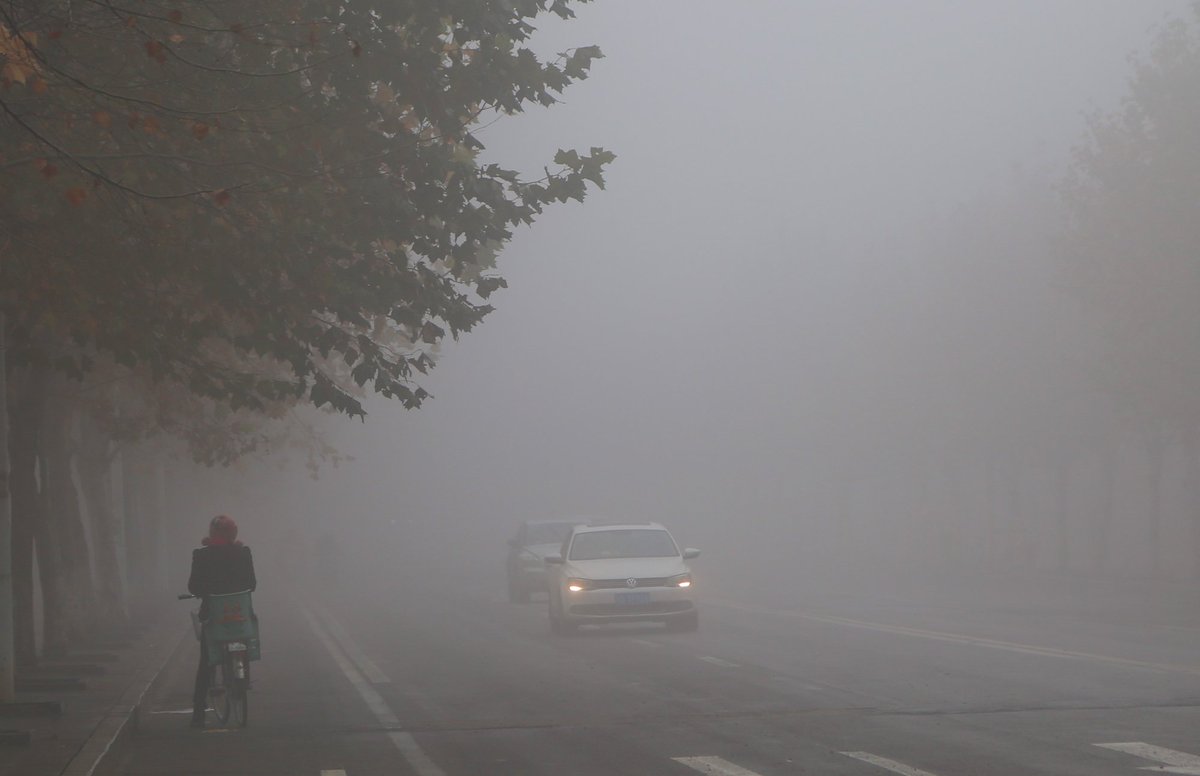
#Smog covers area of 530,000 sqkm around Beijing-Tianjin-Hebei region, as heavy air pollution hits 31 cities: image via CCTVNEWS @cctvnews, 29 November 2015
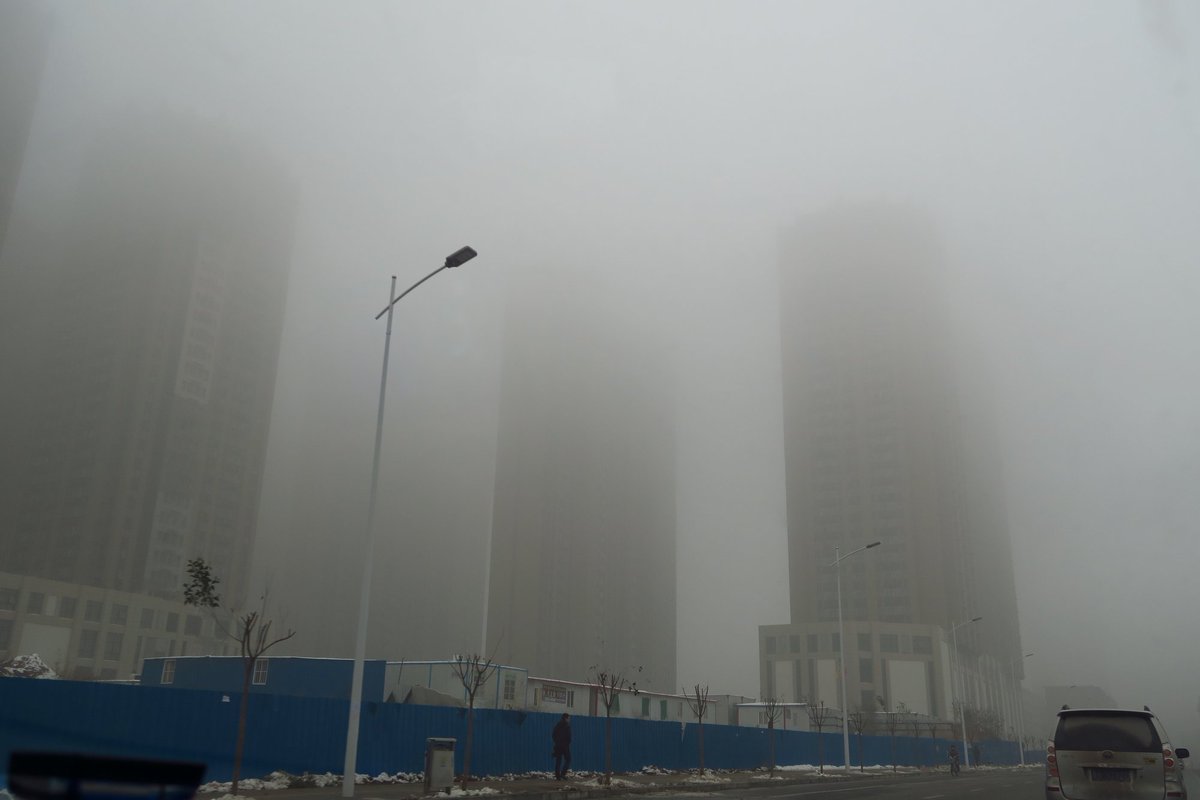
#Smog covers area of 530,000 sqkm around Beijing-Tianjin-Hebei region, as heavy air pollution hits 31 cities: image via CCTVNEWS @cctvnews, 29 November 2015
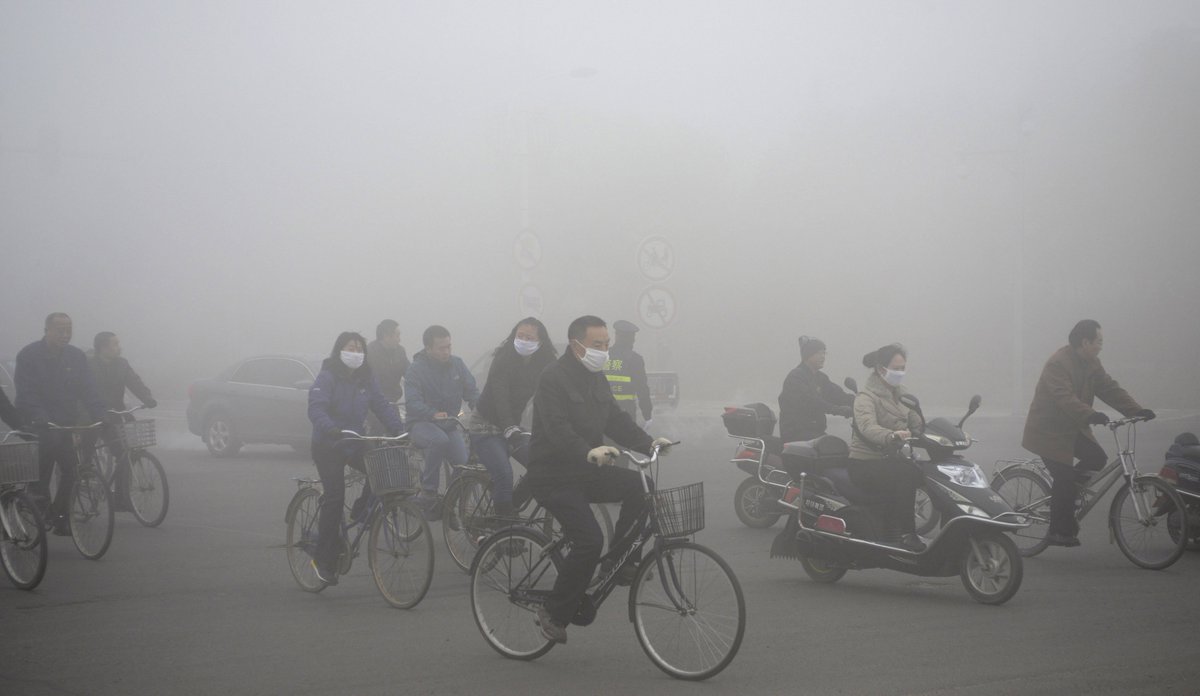
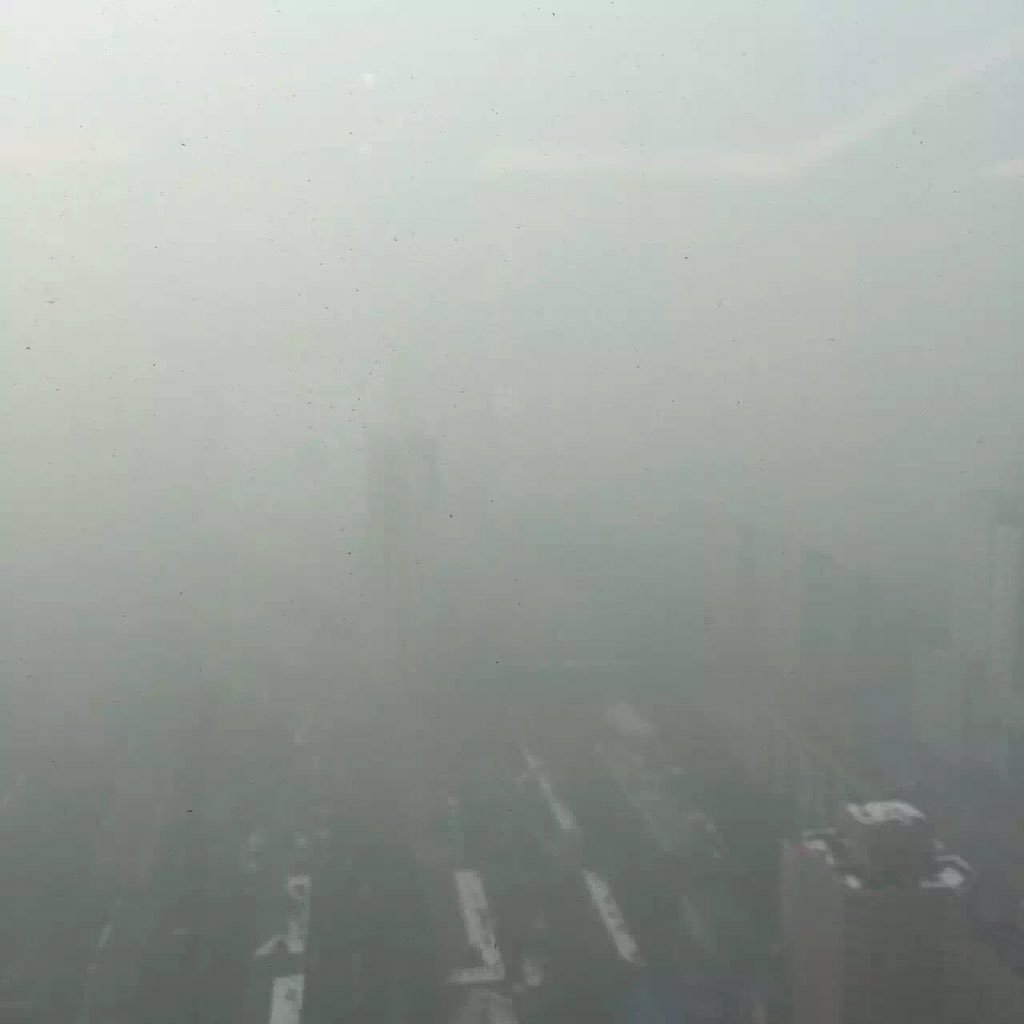
“So what's the difference between #Beijing and Mars?" "We have better food, they have better traffic.": image via Zijing Wu @zijing, 30 November 2015
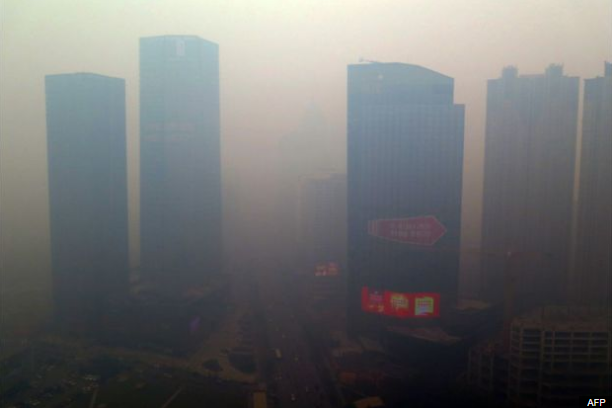
#Beijing issues severe smog warning: image via BBC Weather @bbcweather, 30 November 2015
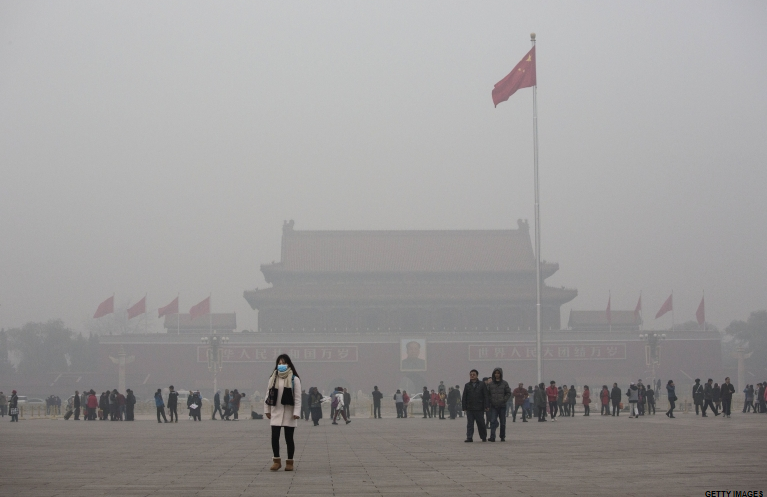
Reports of the worst #smog of the year in parts of China. This is Tiananmen Square in #Beijing: image via BBC Weather @bbcweather, 30 November 2015
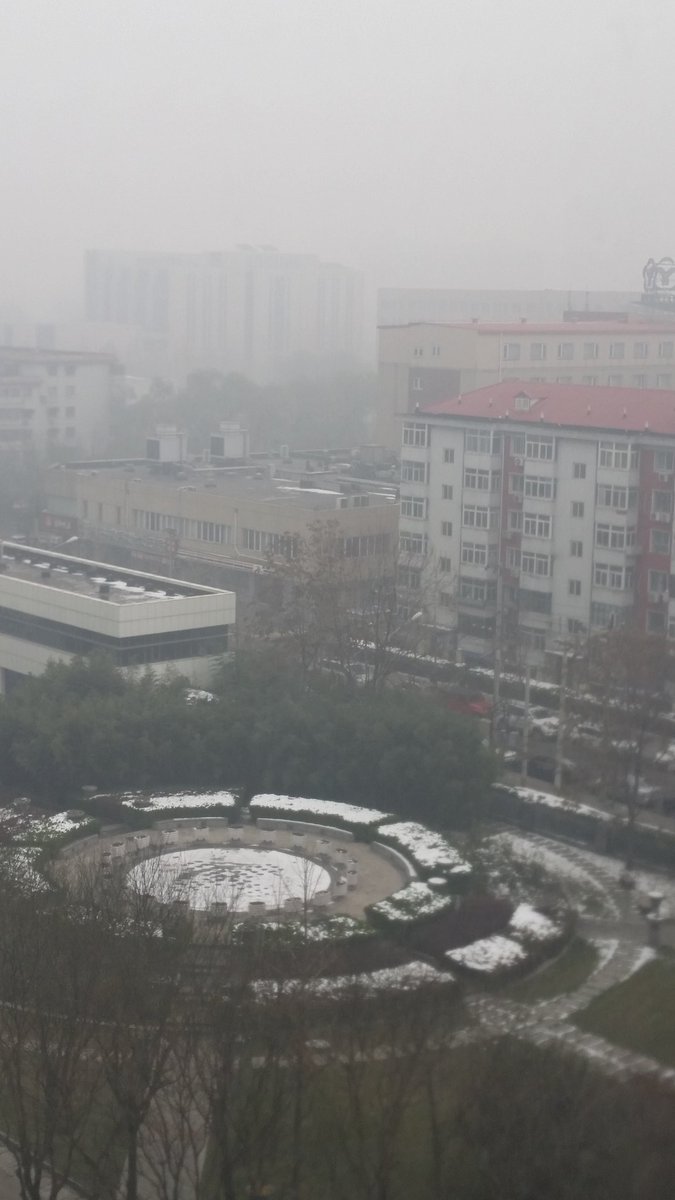
So yeah, mask definitely on #BeijingSmog: image via Kyle Alcott @KyleJAlcott, 30 November 2015
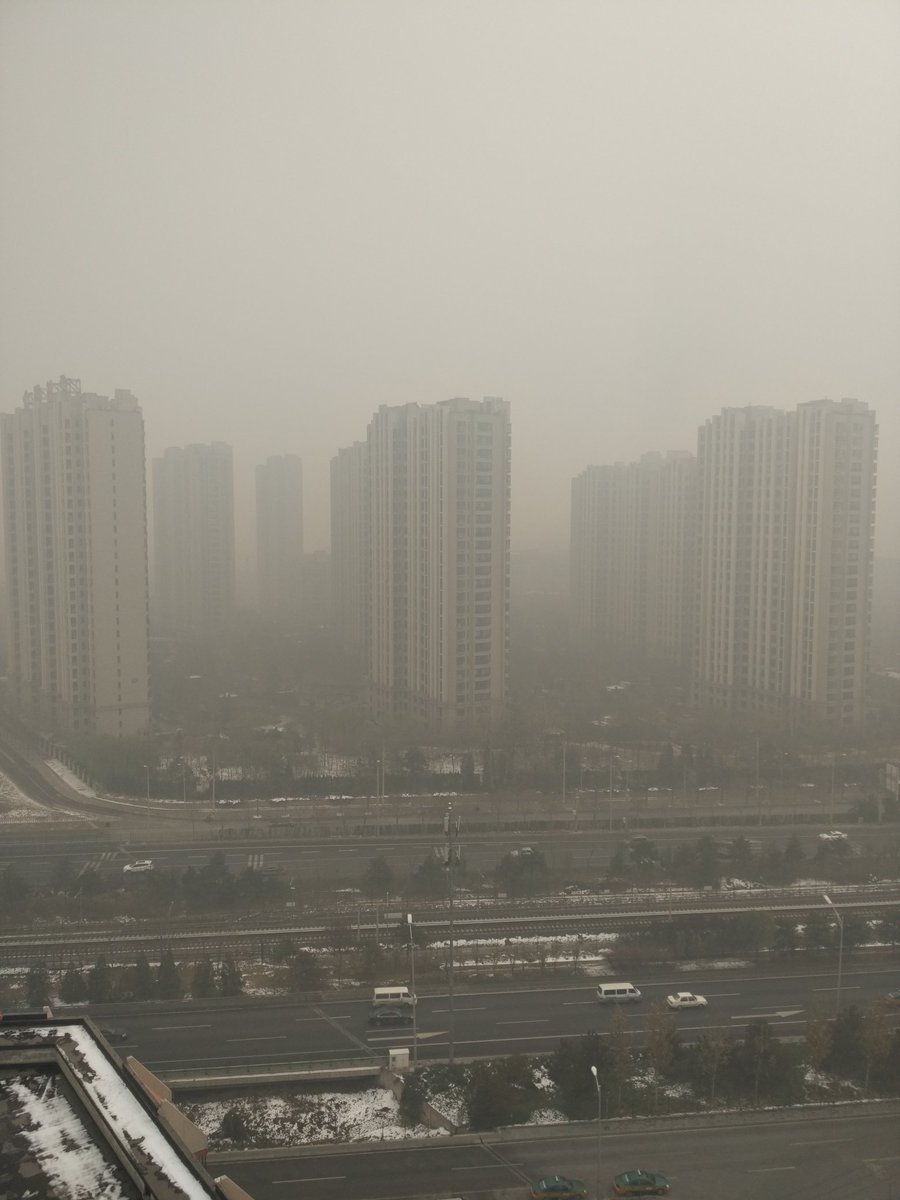
#BeijingSmog so hard to breathe today. #Beijing under the dome: image via Esseté @EssetiYapi, 30 November 2015
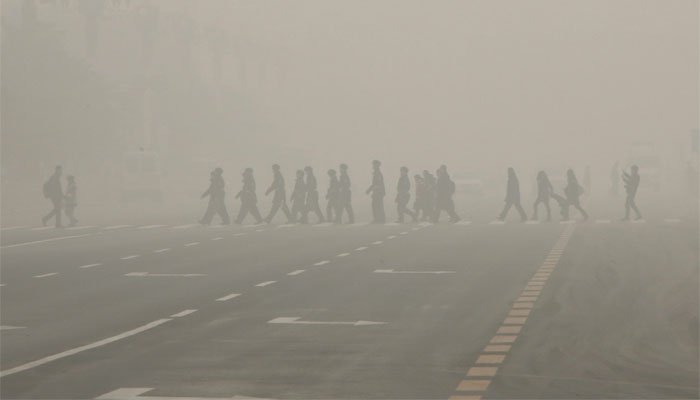
Smog chokes Beijing as Paris climate talks get under way #China #climatechange #BeijingSmog: image via Gulf-Times GulfTimes_QATAR, 30 November 2015 Doha, Qatar

#TheWiderImage: #Smog chokes #Beijing REUTERS/damirsagoli #BeijingSmog #COP21: image via Reuters Paris Pix @ReutersParisPix, 30 November 2015
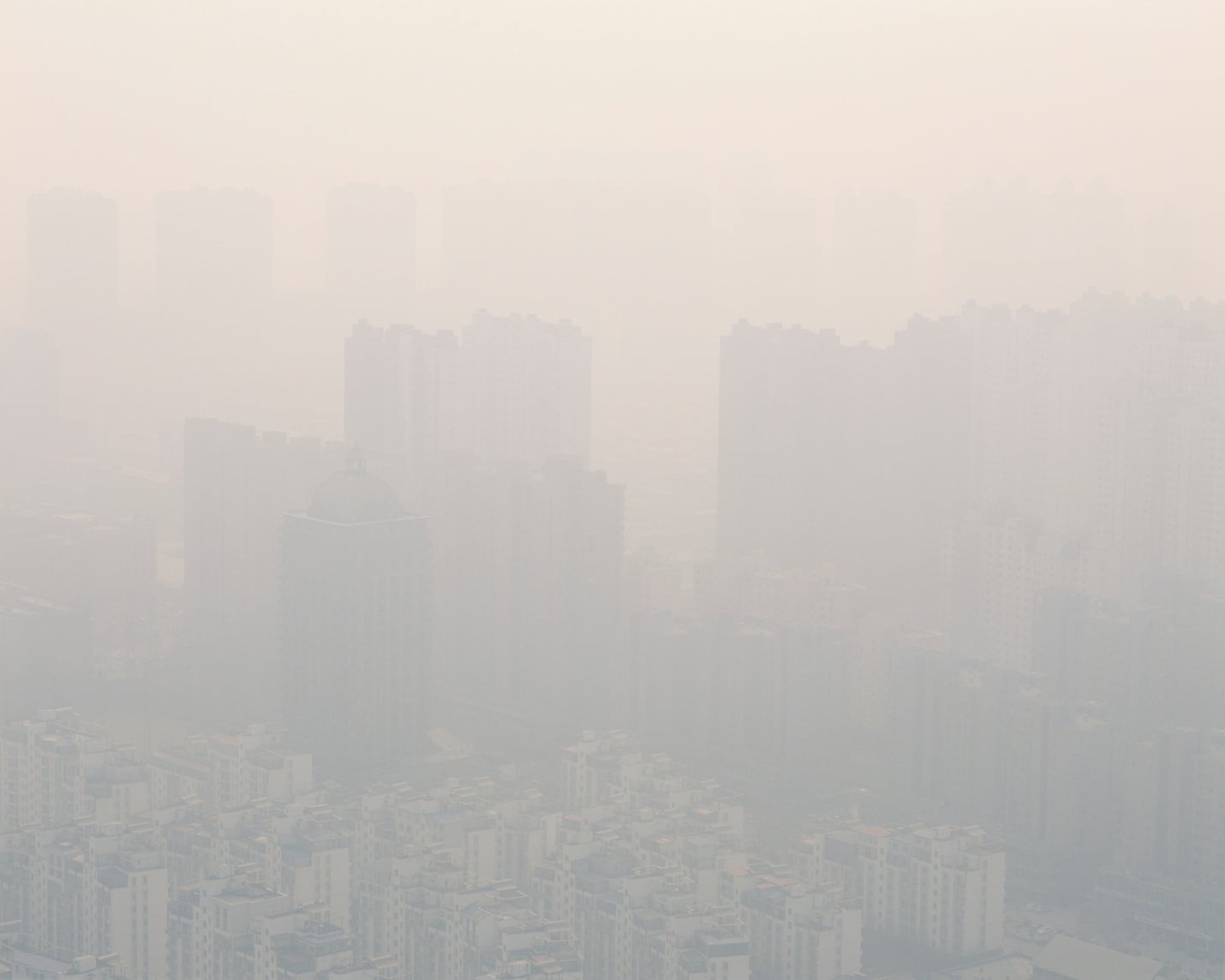
Shijiazhuang, AQI 360, China 2014. This panoramic shot shows a city barely visible through thick fog. Only the title -– AQI 360 –- suggests there is something sinister here. AQI stands for ‘Air Quality Index’. The index runs from 1-500, where 0-50 is ‘good’ and 301-500 indicates a hazardous level of pollution. AQI 301-500 can aggravate heart or lung disease, lead to premature mortality in the elderly and cause serious respiratory problems in the general population: photo by Benedikt Partenheimer via The Guardian 18 November 2014
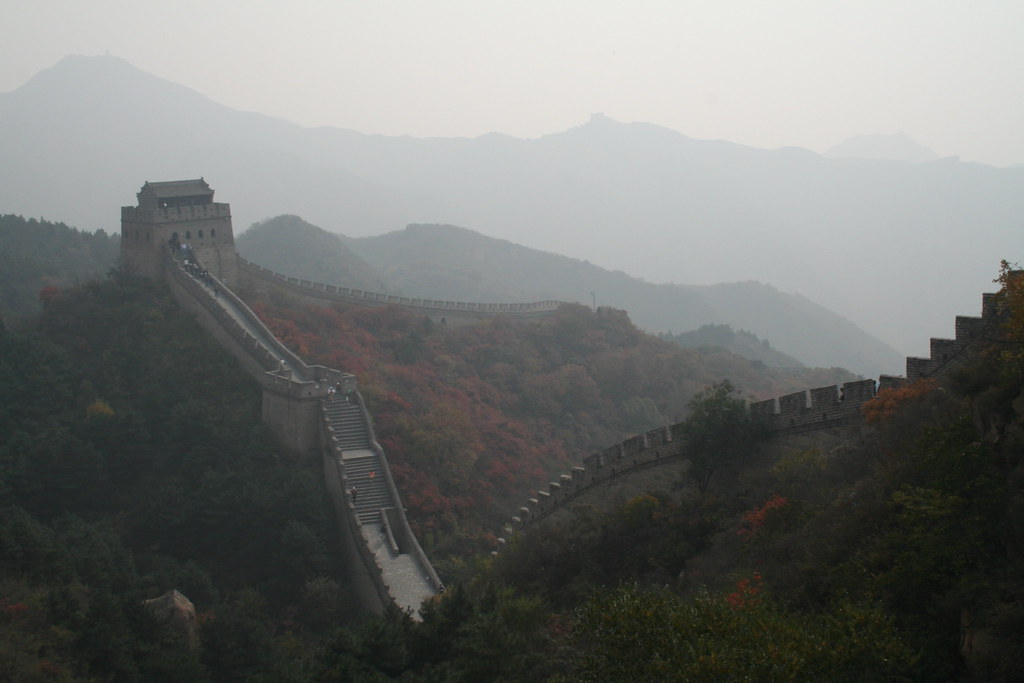
Great Wall cloaked in smog, Beijing: photo by Vicky (vicky tricky), 10 October 2005
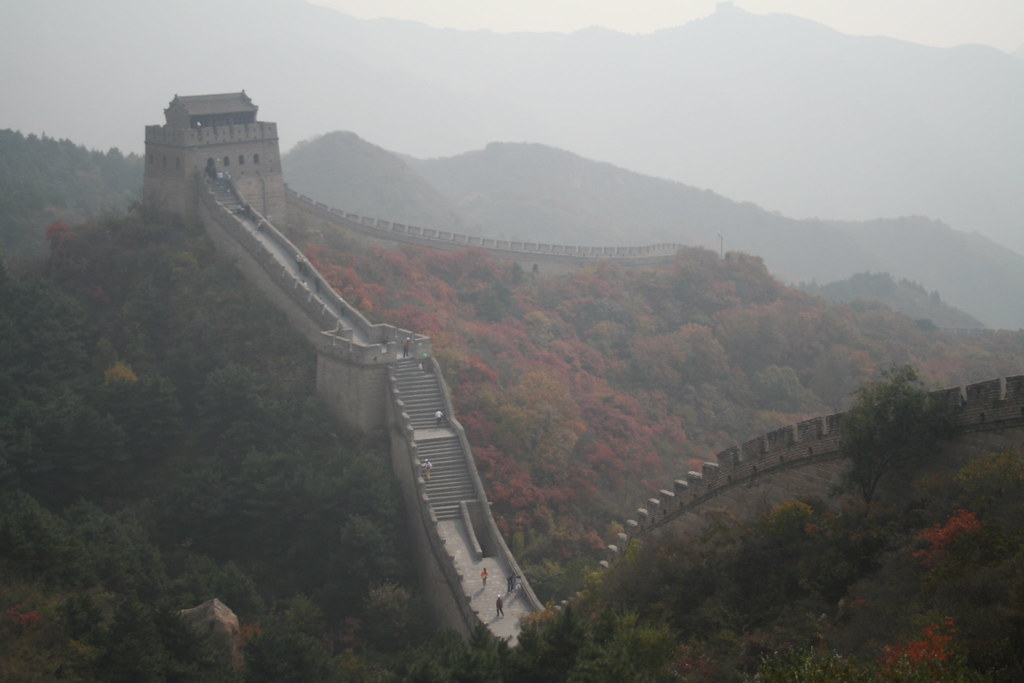
Great Wall cloaked in smog, Beijing: photo by Vicky (vicky tricky), 10 October 2005

China World Trade Centre Tower III (C), one of the tallest buildings in the city at 330m (1083ft), in the heavy haze in Beijing. Beijing and broad swaths of six northern provinces have spent the past week blanketed in a dense pea-soup smog that is not expected to abate until Thursday. Beijing’s concentration of PM 2.5 particles –- those small enough to penetrate deep into the lungs and enter the bloodstream –-hit 505 micrograms per cubic metre on Tuesday night. The World Health Organisation recommends a safe level of 25: photo by Jason Lee / Reuters via The Guardian, 25 February 2014

China World Trade Centre Tower III (C), one of the tallest buildings in the city at 330m (1083ft), in the heavy haze in Beijing: photo by Jason Lee / Reuters via The Guardian, 25 February 2014

A big screen flashes commercials on the exterior of an office building in Xi'an on 15 December 2012: photo by Mayi Wong / EPA via The Guardian, 25 February 2014

A big screen flashes commercials on the exterior of an office building in Xi'an on 15 December 2012: photo by Mayi Wong / EPA via The Guardian, 25 February 2014

The Jinshanling Great Walls in Chengde, north of Beijing: photo by ChinaFotoPress via The Guardian, 25 February 2014

The Jinshanling Great Walls in Chengde, north of Beijing: photo by ChinaFotoPress via The Guardian, 25 February 2014
Chinese tourists walk on a slippery section of ice as snow is seen on the Great Wall after a snowfall on Monday near Beijing, China: photo by Kevin Frayer, 23 November 2015
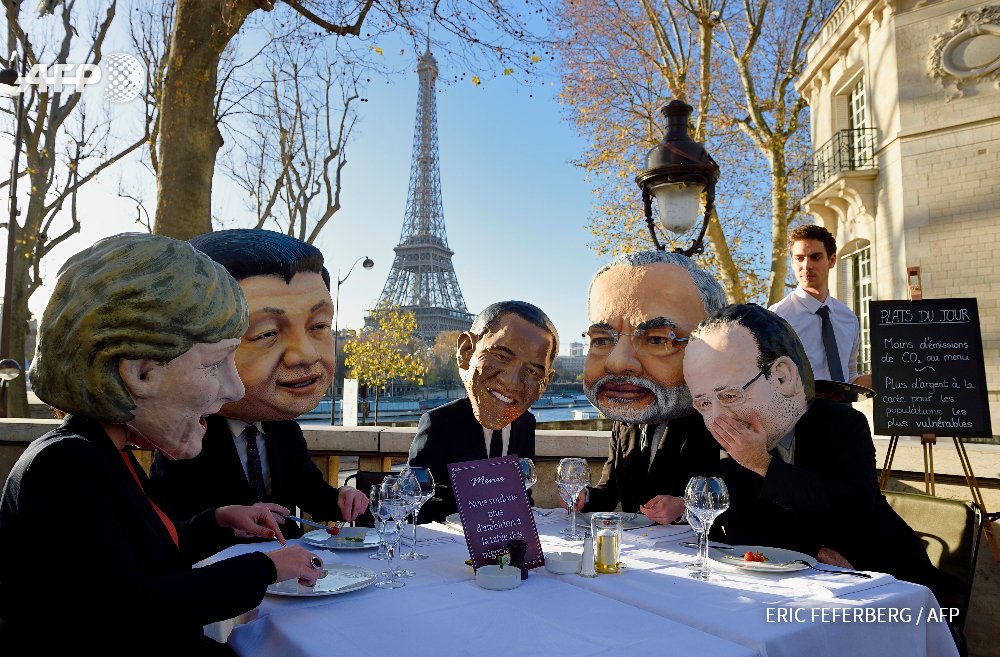
Performers wearing effigies of world leaders gather for breakfast on the eve of #COP21. By Eric Feferberg #AFP: image via AFP Photo Department #@AFPphoto, 30 November 2015

Beyond the last thought, rises
In the bronze distance.
A gold-feathered bird
Sings in the palm, without human meaning,
Without human feeling, a foreign song.
You know then that it is not the reason
That makes us happy or unhappy.
The bird sings. Its feathers shine.
The palm stands on the edge of space.
The wind moves slowly in the branches.
The bird’s fire-fangled feathers dangle down.
Wallace Stevens (1879-1957): Of Mere Being (1954), from Opus Posthumous, 1957

Vehicles pass on a road as smog covers #China's capital #BeijingSmog REUTERS/Jason Lee: image via Reuters Paris Pix @ReutersParisPix, 1 December 2015

Aiyaa! Another day of chunky air in China. The People's Republic is polluting the motherland. #BeijingSmog: image via Mo Fei Chen @DynaMoChen, 1 December 2015

Beijing factories shut amid smog nightmare: image via Agence France-Presse @AFP, 1 December 2015

#Beijing escalates smog warning, orders factories to shut down and trucks off the road: image via Jim Roberts @nycjim, 29 November 2015

You can taste the GDP today #Beijing: image via Robert Foyle Hunwick @MrRFH, 30 November 2015

Beijing today. PM 2.5 in office: 67 ("Fresh Air"). Outside: 966. #beijing #beijingair #beijingsmog: image via Martijn Herrman @Martijn Herrman, 30 November 2015

#Smog covers area of 530,000 sqkm around Beijing-Tianjin-Hebei region, as heavy air pollution hits 31 cities: image via CCTVNEWS @cctvnews, 29 November 2015

#Smog covers area of 530,000 sqkm around Beijing-Tianjin-Hebei region, as heavy air pollution hits 31 cities: image via CCTVNEWS @cctvnews, 29 November 2015

#Smog covers area of 530,000 sqkm around Beijing-Tianjin-Hebei region, as heavy air pollution hits 31 cities: image via CCTVNEWS @cctvnews, 29 November 2015

#Smog covers area of 530,000 sqkm around Beijing-Tianjin-Hebei region, as heavy air pollution hits 31 cities: image via CCTVNEWS @cctvnews, 29 November 2015

Choking smog blankets Beijing just as climate talks begin in #Paris: image via Jim Barnett @JimBarnettNews, 30 November 2015
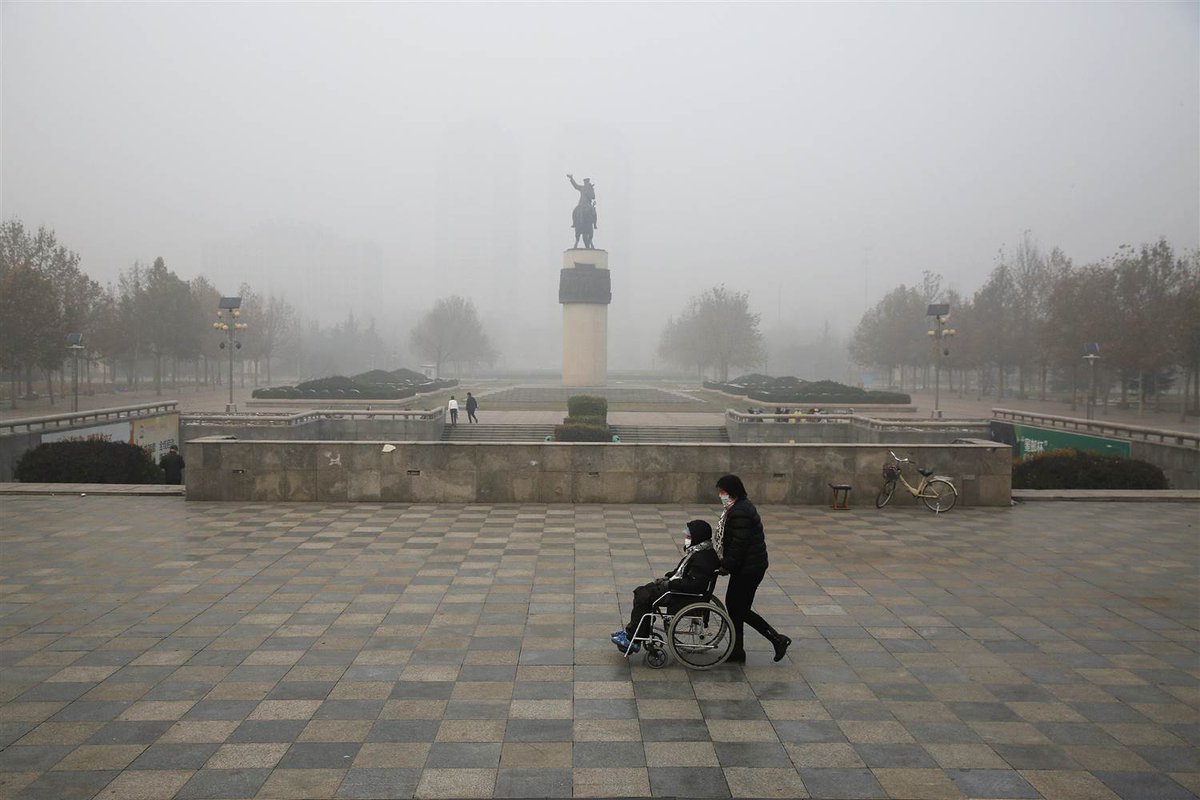
Choking smog blankets Beijing just as climate talks begin in #Paris: image via Jim Barnett @JimBarnettNews, 30 November 2015

Choking smog blankets Beijing just as climate talks begin in #Paris: image via Jim Barnett @JimBarnettNews, 30 November 2015

“So what's the difference between #Beijing and Mars?" "We have better food, they have better traffic.": image via Zijing Wu @zijing, 30 November 2015

#Beijing issues severe smog warning: image via BBC Weather @bbcweather, 30 November 2015

Reports of the worst #smog of the year in parts of China. This is Tiananmen Square in #Beijing: image via BBC Weather @bbcweather, 30 November 2015

So yeah, mask definitely on #BeijingSmog: image via Kyle Alcott @KyleJAlcott, 30 November 2015

#BeijingSmog so hard to breathe today. #Beijing under the dome: image via Esseté @EssetiYapi, 30 November 2015

Smog chokes Beijing as Paris climate talks get under way #China #climatechange #BeijingSmog: image via Gulf-Times GulfTimes_QATAR, 30 November 2015 Doha, Qatar

#TheWiderImage: #Smog chokes #Beijing REUTERS/damirsagoli #BeijingSmog #COP21: image via Reuters Paris Pix @ReutersParisPix, 30 November 2015

Shijiazhuang, AQI 360, China 2014. This panoramic shot shows a city barely visible through thick fog. Only the title -– AQI 360 –- suggests there is something sinister here. AQI stands for ‘Air Quality Index’. The index runs from 1-500, where 0-50 is ‘good’ and 301-500 indicates a hazardous level of pollution. AQI 301-500 can aggravate heart or lung disease, lead to premature mortality in the elderly and cause serious respiratory problems in the general population: photo by Benedikt Partenheimer via The Guardian 18 November 2014

Great Wall cloaked in smog, Beijing: photo by Vicky (vicky tricky), 10 October 2005

Great Wall cloaked in smog, Beijing: photo by Vicky (vicky tricky), 10 October 2005

Great Wall cloaked in smog, Beijing: photo by Vicky (vicky tricky), 10 October 2005
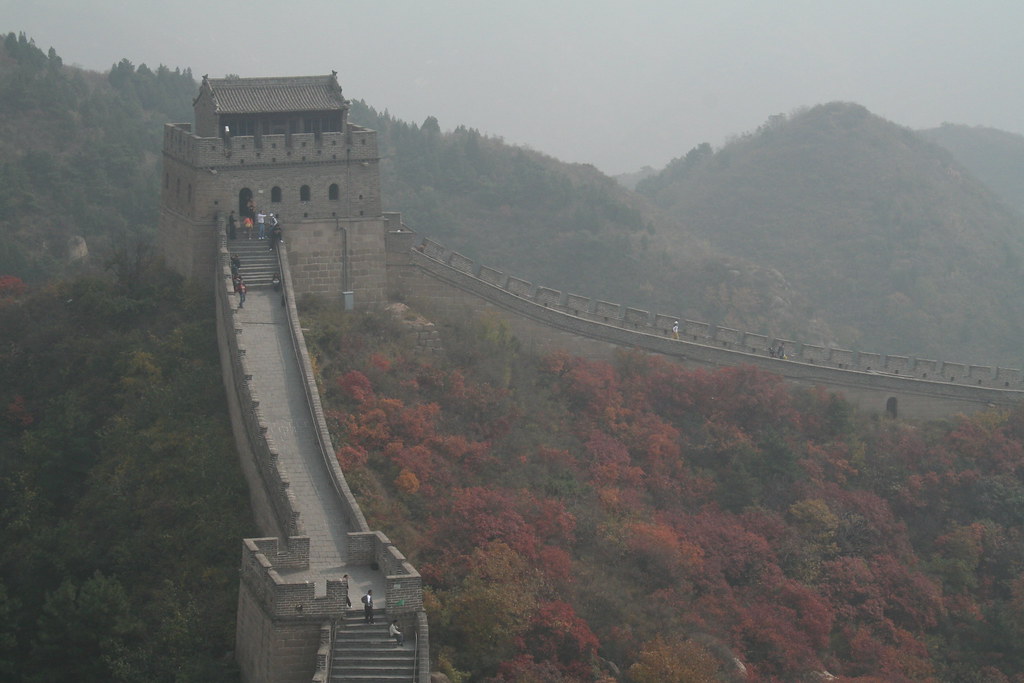

Great Wall cloaked in smog, Beijing: photo by Vicky (vicky tricky), 10 October 2005

Great Wall cloaked in smog, Beijing: photo by Vicky (vicky tricky), 10 October 2005

China World Trade Centre Tower III (C), one of the tallest buildings in the city at 330m (1083ft), in the heavy haze in Beijing. Beijing and broad swaths of six northern provinces have spent the past week blanketed in a dense pea-soup smog that is not expected to abate until Thursday. Beijing’s concentration of PM 2.5 particles –- those small enough to penetrate deep into the lungs and enter the bloodstream –-hit 505 micrograms per cubic metre on Tuesday night. The World Health Organisation recommends a safe level of 25: photo by Jason Lee / Reuters via The Guardian, 25 February 2014

China World Trade Centre Tower III (C), one of the tallest buildings in the city at 330m (1083ft), in the heavy haze in Beijing: photo by Jason Lee / Reuters via The Guardian, 25 February 2014

A big screen flashes commercials on the exterior of an office building in Xi'an on 15 December 2012: photo by Mayi Wong / EPA via The Guardian, 25 February 2014

A big screen flashes commercials on the exterior of an office building in Xi'an on 15 December 2012: photo by Mayi Wong / EPA via The Guardian, 25 February 2014

The Jinshanling Great Walls in Chengde, north of Beijing: photo by ChinaFotoPress via The Guardian, 25 February 2014

The Jinshanling Great Walls in Chengde, north of Beijing: photo by ChinaFotoPress via The Guardian, 25 February 2014
Chinese tourists walk on a slippery section of ice as snow is seen on the Great Wall after a snowfall on Monday near Beijing, China: photo by Kevin Frayer, 23 November 2015

Performers wearing effigies of world leaders gather for breakfast on the eve of #COP21. By Eric Feferberg #AFP: image via AFP Photo Department #@AFPphoto, 30 November 2015

A Chinese tourist walks in the tongue of Glacier 1 at the base of the
7,556 m (24,790 ft) Mount Gongga, known in Tibet as Minya Konka.
Hailuogou is one of China’s 8,500 monsoonal glaciers and the longest of
71 glaciers on the eastern slope of Mt. Gongga: photo by Kevin Frayer, 25 November 2015





14 comments:
Petra Haden: I Can See for Miles
The Prophet Muhammad, peace and blessings be upon him, said in one of his recorded statements that one of the signs of the end of time is a vast yellow mist. He also mentioned people of little culture and knowledge vying with each other in building tall buildings. That at the beginning it would be a revelation and prophecy, then a khalifate (but a real one), then would come kings, and their heirs, and finally "harj", meaning chaos and violence. I wonder often if that's what we're seeing now, or just its harbingers. To graver weirdness to come... And he's speaking universally, not just among the community of adherents. We don't need an atom bomb. It's a population explosion. And the fallout is happening everywhere. Seek safety, go to the high ground. Remain calm. Let our fire-fangled feathers dangle down.
Lahore, early in the morning, looks somewhat similar. Never seen anything like it-certainly not at this time of the year.
As if by magic:
http://www.theguardian.com/cities/2015/dec/02/where-world-most-polluted-city-air-pollution
Would that China’s air pollution were China’s alone. But what happens in Vegas no longer stays in Vegas. Those poisonous particles that make up another sort of ‘bronze distance’ eventually will reach around the world and into the lungs of everyone on the planet, whether one consumes or doesn’t consume the bling from all those dirty factories. We hear that China is moving rapidly to implement alternate fuels and other chimerical solutions. But China faces a dilemma: whichever way they jump, it’s going to hurt. For ‘China’ substitute ‘the world’ and the picture, unlike the sad air we breathe, becomes clear.
our misery facing the immutable perfection and beauty of nature...wonderful post...!!
I tried a translation of Del mero ser
La palmera al final de la mente,
más allá del último pensamiento, se eleva
en la distancia broncínea.
Un pájaro dorado
canta en la palmera , sin significado,
sin sentimiento humano, una canción ajena.
Sabes entonces que esa no es la razón
que nos hace felices o infelices
El pájaro canta. Sus plumas brillan.
La palmera permanece en el borde del espacio.
El viento se mueve lentamente en las ramas.
Cuelgan las aparatosas plumas de fuego del pájaro.
This just in! (in reference to the various symbiotic parallel human insanities that are seeming to prevail) (Note: The mostly nomadic Arabia of the 6th century was not known for tall buildings...)
Saudis reach for the sky
Washington Post
Wednesday, December 2, 2015, 1:08 Am
Dubai's superlative-loving rulers are on notice: Saudi Arabia seems to be getting serious about stealing your crowning glory.
State-linked development companies in the port of Jiddah have agreed to pony up the money for a skyscraper flirting with the unprecedented one-kilometer mark.
That's about 3,280 feet. Or about 550 feet taller than the current record spire, Dubai's Burj Khalifa. Or more than three times as tall as Philadelphia's 974-foot Comcast Center.
The planned Jiddah Tower is a monumental undertaking that had something of a pie-in-the-sky aura when it was first rumored last decade.
But it looks as if Saudi Arabia could make good on its blueprints. Two major state development arms announced this week a $1.2 billion financing deal to fund the 200-story tower and surrounding developments. Plans call for the building to be completed in 2020.
Already, 26 stories are built. An observation terrace is planned on Floor No. 157 of the tower, shaped like a gleaming shard.
More startling than the size is the timing. Saudi Arabia is in an oil slump. Add to that the costly Saudi-led war in Yemen against anti-Saudi rebels.
The project is something of a statement piece for King Salman, who will mark his first year in charge in January. No doubt the nearly 80-year-old hopes to be around for a ribbon-cutting.
If it happens, the tallest-skyscraper bragging rights would shift to its fifth country in a little more than a generation.
The Burj Khalifa took the title in 2010 from Taiwan's 1,670-foot Taipei 101 tower.
COUP DE GRÂCE
Just imagine if these world leaders—and not their effigies—were enjoying a scrumptious dinner of divine Peking duck, ultimate offering of the Earth’s suffering.
From Wikipedia, the free encyclopedia
Peking Duck is a famous duck dish from Beijing that has been prepared since the imperial era. The meat is prized for its thin, crisp skin, with authentic versions of the dish serving mostly the skin and little meat, sliced in front of the diners by the cook. Ducks bred specially for the dish are slaughtered after 65 days and seasoned before being roasted in a closed or hung oven. The meat is eaten with scallion, cucumber and sweet bean sauce with pancakes rolled around the fillings. Sometimes pickled radish is also inside, and other sauces (like hoisin sauce) can be used. In 2012, The Huffington Post ranked Peking duck 1st in list of "10 Foods Around The World To Try Before You Die".
Sandra, that last line of Stevens' is a killer, and "aparatosas" seems totally apt, though you lose the clanging rhyme. "Ostentatious, showy," in mi diccionario... (I wonder if you'd be willing to consider collaborating on a book-long translation of the posthumous poems of Mexican poet Marco Antonio Montes de Oca into English?) (Please forgive me Tom for sending messages across the room while your back's turned to the blackboard...)
I appreciate your comment very much Daniel...it is always interesting and a challenge to translate...thanks !!
In Stevens' Collected Poems, this very late poem appears with a small difference.
The palm at the end of the mind,
Beyond the last thought, rises
In the bronze distance.
becomes
The palm at the end of the mind,
Beyond the last thought, rises
In the bronze decor.
There has been some contention over this.
I'm not sure what Stevens would say, were he here.
In any case I prefer the Opus Posthumus version, given here.
We breathe China's air, such as it may be, every day.
Billoo, on the cutting room floor of this post lay shreds of similar images from Delhi, Lahore, among other places.
The whole concept of any building over two storeys, as the whole concept of the motorcar, the mobile phone, the credit card, indeed of so many, too many, other common modern devices and alleged conveniences (necessities?), grows farther out of reach of my humble to start with, and doubtless rapidly dwindling, cognitive powers, every day.
I understand by the way the dogs don't have it all that much much better than ducks...
"chimerical solutions..."
Alas, such is our fate..to lie in shreds on the floor!
:-)
yes...I think too that the version given here is the best!
Post a Comment